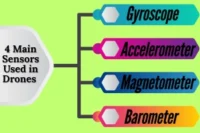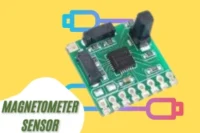H Frame Drone for Stable Freestyle Flights
Published: 17 Jul 2025
Imagine drawing a giant letter “H” and turning it into a flying machine. That’s what an H frame drone looks like, Simple shape, strong design. This frame isn’t just about how it looks, it’s about what it can do. With wide arms and strong support, it’s perfect for freestyle flying and movement. Whether you are new to drones or just curious about different frame types, learning about the H frame can change how you see flight design. In this post, we’ll break down why the H frame stands out, how it compares to other frames, and why it might be the perfect choice for your next drone.
Why Choose an H Frame Design
If you are wondering why so many drone builders choose the H frame, it’s because this design makes flying and building easier.
Stable and balanced during flight : The wide arm spacing helps distribute weight evenly, which keeps your drone from tilting or drifting too much. This means smoother flights and easier control.
Strong build with wide arms : H frames are built to take hits. The arms are usually thicker and better supported, so they handle crashes better than lighter racing frames.
More space to mount components : The open center layout gives you more room for flight controllers, batteries, and extra gear like GPS or FPV cameras. This also makes repairs and upgrades easier.
Cleaner camera view : Since the front propellers are spaced wider apart, they don’t block the camera as much. This gives you a clearer field of view great for FPV and video recording.
Easier layout for first-time builders : Beginners find the H frame easier to work with because there’s less crowding. All the parts are easy to see, place, and wire up.
Pros and Cons of an H Frame Drone
Before choosing the right frame for your drone, it helps to know what the H frame does well, and where it might fall short.
Pros
Durable and crash-resistant : H frames are known for their solid structure. The wide arms and strong center help absorb impact during crashes, making them a reliable choice for beginners and freestyle pilots.
Open layout for easier DIY work : The roomy design gives you space to mount and connect components without feeling cramped. This makes it easier to build, upgrade, or fix the drone yourself.
Less propeller interference in FPV view : Since the arms are spaced farther apart, your front-facing camera has a clearer view. That means fewer spinning propellers showing up in your footage.
Simple to maintain and repair : Because everything is more visible and spaced out, it’s quicker to spot issues and fix them. No need to squeeze tools into tight corners.
Cons
Can create more air drag : The wide layout can slow the drone down a little because it pushes more air. It’s not a big issue for freestyle, but it’s something to consider for racing.
Not as agile as racing frames : H frames are stable but not built for speed. If you need sharp, fast turns like in drone racing, other frame types like the X frame might be a better fit.
Slightly bulkier for long-range or speed : The larger build can make the drone heavier and less aerodynamic, which may affect battery life and top speed during longer flights.
H Frame vs. X Frame
Choosing the right drone frame can change the way your drone flies. If you’re torn between the H frame and the X frame, here’s a simple breakdown.
| H Frame Drone |
|---|
|
Wide body with arms forming the shape of an “H” More stable and balanced, great for tricks and freestyle. Offers more room in the center for mounting components. Less propeller interference in FPV view. Freestyle flying, learning, DIY projects |
| X Frame Drone |
|---|
|
Diagonal symmetry with arms forming an “X” shape Faster and more agile, ideal for racing and quick turns. Tighter build, less internal space Props may show up in front camera view. Racing, speed-focused flying |
H Frame vs. Deadcat Frame
Not all drone frames are built for the same purpose. If you are deciding between an H frame and a Deadcat frame, your choice depends on how you plan to fly.
| H Frame Drone |
|---|
|
Slight propeller visibility in FPV view. Great for tricks, flips, and freestyle flying. Very stable and balanced during freestyle moves. Freestyle flying, acrobatics, beginner builds. Pilots who want control and stunt flying. |
| Deadcat Frame Drone |
|---|
|
Minimal or no propeller interference in camera view. Designed for smooth, cinematic video capture. Stable but less agile for acrobatics. Filming, cinematic FPV, clean camera footage. Creators who focus on capturing high-quality footage. |
Conclusion
If you are just getting into drones or want a solid, reliable frame for freestyle flying, the H frame is a smart choice. It offers stability, a strong build, and plenty of space to work with.
This frame shines when you’re learning the basics or trying out flips, rolls, and quick turns. Its open design also makes it a favorite for DIY builders who want more control over their drone setup.
So, is the H frame right for you? If you’re looking for a beginner-friendly frame that’s fun to fly and simple to build, then yes, it’s a great place to start. Give it a try. Build one, fly one, and see how it changes your drone experience.





